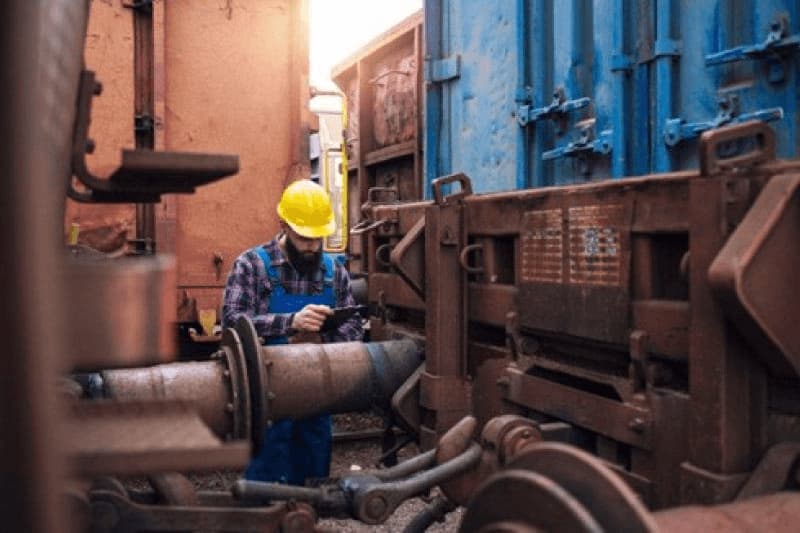Contents
Indoor location tracking is becoming increasingly popular across various industries, including the oil and gas sector. With expensive equipment that requires constant monitoring, having an accurate and reliable tracking system has never been more important.
This guide shares valuable insights on how indoor location tracking can improve oil and gas operations, boost workplace productivity, and ensure smooth workflow. Get ready to take your oil and gas operations to the next level with the help of our guide.
What Is Indoor Location Tracking and Its Impact on the Oil & Gas Industry

Indoor location tracking technology is a game-changer for businesses looking to monitor the movements of people and objects in indoor environments, whether big or small. By combining sensors and wireless networks, it provides real-time location information, making it easier for the oil and gas industry to manage their assets effectively and safely.
With indoor positioning systems, companies can track their resources’ locations and ensure they are being utilized efficiently. Additionally, it enables monitoring of personnel and equipment locations to ensure compliance with safety protocols. Asset tracking systems can also prevent theft or misplacement of assets.
Ultimately, indoor positioning technology helps oil and gas companies improve their resource management and operational efficiency while reducing risks.
Key benefits of indoor location tracking in Oil & Gas
Indoor location tracking technology is transforming the oil and gas industry by enhancing safety, accuracy, and efficiency in various scenarios. Its impact translates to fewer downtimes, cost savings, and increased productivity. Here are some of the advantages of using indoor location tracking in the oil and gas industry:
Enhancing safety
Indoor location tracking technology promotes safety in hazardous environments by monitoring the location and movements of personnel. Supervisors can quickly respond to any safety concerns by analyzing workers’ locations and movements, ensuring that they are safe while performing dangerous operations.
Enhancing accuracy
Indoor positioning systems provide unparalleled accuracy in asset management, far surpassing traditional asset tracking methods. This technology enables companies to pinpoint the precise location of their assets, even within a facility. With a level of precision of up to one meter, the oil and gas industry can ensure that their resources are being utilized accurately and efficiently.
Improving efficiency
Indoor location tracking technology streamlines processes by automating tasks such as asset tracking and inventory management. By eliminating the need for manual processes, companies can significantly reduce downtime and increase efficiency. Ultimately, this leads to cost savings for businesses and improved productivity.
Common applications for indoor location tracking in Oil & Gas, and how to leverage them to improve operations and safety protocols
There are several applications used for indoor location tracking in the oil and gas industry, including:
RFID (Radio Frequency Identification)
RFID (Radio Frequency Identification) is a wireless technology that uses radio waves to communicate with tags attached to objects, and it is one of the indoor location technologies that can be used in the oil and gas industry. RFID tags contain a unique identifier that can be read by a RFID reader, allowing the location of the tagged object to be tracked in real-time.
RFID technology is widely used in the oil and gas industry for asset tracking, inventory management, and supply chain management. In the context of asset tracking, RFID tags can be attached to equipment such as pumps, valves, and tools. This allows the location of equipment to be tracked in real-time, enabling better utilization of equipment, reducing downtime, and improving maintenance planning.
RFID technology offers a distinct advantage in challenging environments, such as those found in the oil and gas industry. RFID tags are resilient to extreme temperatures, corrosive chemicals, and other harsh conditions that would compromise alternative tracking methods. This resilience makes RFID a valuable asset in enhancing operational efficiency and bolstering safety protocols within the industry.
Wi-Fi based location tracking
This technology uses WIFI access points to locate people or devices within a facility, this can be used as an indoor positioning system in the oil and gas industry.
One of the benefits of Wi-Fi based location tracking is that it can be used to track both assets and personnel within the facility. Wi-Fi based location tracking can be used to ensure that workers are in the correct locations and are not in hazardous areas, improving safety protocols. Additionally, Wi-Fi based location tracking can be used to optimize workflows and reduce bottlenecks by analyzing the movement of personnel and equipment within the facility.
Wi-Fi based location tracking can also be integrated with other systems, such as access control systems and video surveillance systems, to provide a comprehensive view of the facility. By integrating Wi-Fi based location tracking with other systems, companies can improve safety protocols, reduce operational costs, and increase efficiency.
UWB (Ultra Wide band) technology
UWB (Ultra Wideband) is a technology that can be used in the oil and gas industry. It uses a wireless protocol that uses radio waves to determine the precise location of assets or personnel.
By tracking the location of forklifts within a facility, companies can improve safety protocols and optimize workflow. For example, if a forklift is detected in a hazardous area, alerts can be sent to workers in the area, preventing accidents and injuries.
Machine learning algorithms can be used with UWB technology to provide advanced location tracking capabilities. These algorithms can analyze location data to identify patterns and trends in worker and equipment movements. This information can be used to optimize workflows and improve operational efficiency.
How to choose the right solution for your business
When considering a location tracking system for your business, there are several key factors to consider: accuracy, affordability, scalability, usability and features.
The accuracy of an indoor positioning solution is paramount. Ensure that the system’s interactive maps are up to date and reliable, and that it can provide detailed information about your assets or personnel in real-time.
Also look for a system that is easily scalable – one that can be adapted to meet your business’s changing needs, whether you need to track a few people or many assets. Ensure that it is cost-effective too, with low cost upfront ownership and low cost of maintenance over time.
Look for a user-friendly interface that is both intuitive and easy to use, so that it can be used by anyone in your company without any hassle.
When it comes to features, make sure that the system you choose is tailored to your specific needs.
When selecting the perfect system for your needs, it’s always a good idea to ask for a demonstration and try out the features yourself. Taking the time to do so will ensure that you find the best location tracking system for your business, helping you get the most out of it in terms of operational efficiency, cost-savings and insight into your performance.
Implementing indoor location tracking with Litum
Litum is a company that specializes in providing indoor location tracking solutions. We have developed a system that uses UWB (ultra-wideband) RTLS (real-time location system) technology to accurately pinpoint the location of an object or person within a facility. This UWB RTLS system is extremely accurate and allows users to track the exact location of anyone or anything in real time.
The technology utilized by Litum is based on sensor fusion, where multiple sensors are used together to create an accurate picture of an area. By combining the data from these different sensors, our indoor tracking system can accurately determine an object or person’s location even in difficult environments. This sensor fusion technology allows users to track objects or people seamlessly and in real time.
Overall, Litum’s indoor location tracking solutions provide businesses with the ability to monitor movement within their premises in real-time. Our system provides a number of benefits, from improving safety protocols to optimizing marketing efforts. With Litum, businesses can gain valuable insights into customer activity and ensure optimal utilization of their resources.
Proper indoor positioning is now a must-have for oil and gas companies. As the technology continues to develop, more ways to utilize it will be discovered. This guide should help you take your first steps in implementing an indoor location tracking system that benefits your business.
And when you’re ready to upgrade your existing indoor tracking system, look for Litum’s products – we specialize in providing high-quality yet affordable location tracking devices and software.



